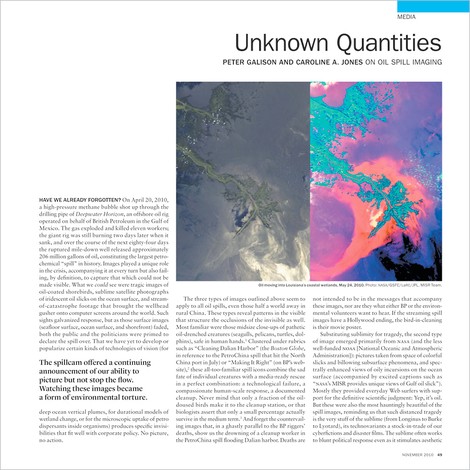Your podcast discovery platform
Curious minds select the most fascinating podcasts from around the world. Discover hand-piqd audio recommendations on your favorite topics.

piqer for: Global finds Technology and society Globalization and politics
Elvia Wilk is a writer and editor living in New York and Berlin, covering art, architecture, urbanism, and technology. She contributes to publications like Frieze, Artforum, e-flux, die Zeit, the Architectural Review, and Metropolis. She's currently a contributing editor at e-flux Journal and Rhizome.
Visualizing Catastrophe
Roll back to April 2010. An offshore oil rig explodes in the Gulf of Mexico. The disaster becomes the largest petrochemical spill of all time, dropping 206 million gallons of oil into the ocean, and killing eleven people just in the blast. The event becomes known by the name of the drilling pipe: Deepwater Horizon.
You likely remember images of the event, if you remember it at all. But, write Peter Galison and Caroline Jones in this essay, the scope of the disaster is impossible to depict at all given our current imaging technologies—when it comes to the macro or the micro scope of calamity. That is, mass media has yet to find a way to produce the kind of image “between the intimate scale of individual death and the sublimity of the satellite view.”
Eight and a half years later, one wonders whether these technologies may be catching up, or whether all visual documentation will always fall short in the face of the scale of catastrophe—not to mention climate change en masse, which itself is a kind of slow catastrophe, the slowness of which makes it hard to get across in one picture. And one picture is so often the only thing the public has time for—the only thing that can galvanize public opinion and spur change. Thus, the authors argue:
“Our response must be to take what’s out of sight, and keep it well in mind.”
